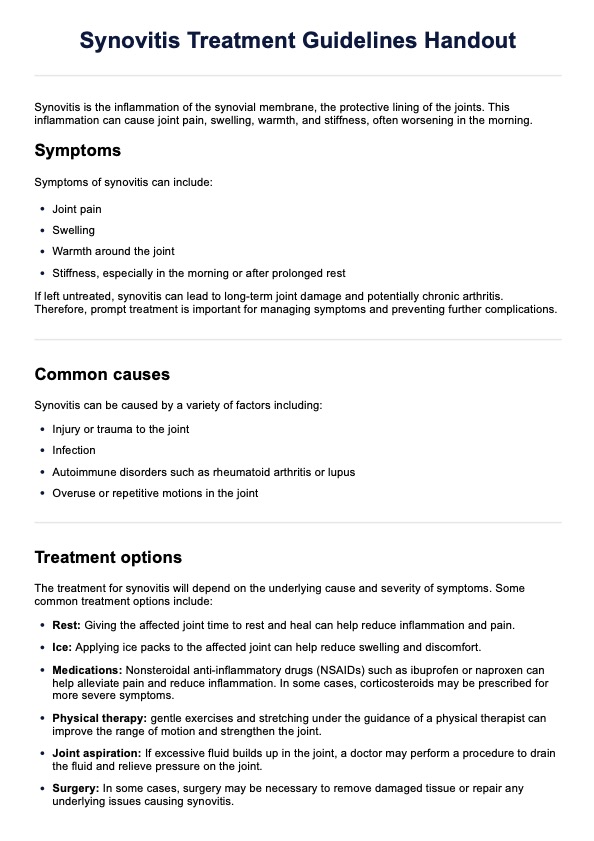Yes, synovitis can go away on its own in some cases. However, it is important to note that the duration of synovitis and whether or not it will resolve on its own varies from person to person. Some individuals may experience a shorter duration of symptoms, while others may require more time for the inflammation to subside.

Synovitis Treatment Guidelines Handout
Discover guidelines for treating synovitis, including symptoms, causes, and effective treatments. Download our free PDF and learn how to manage joint inflammation for optimal patient care.
Synovitis Treatment Guidelines Handout Template
Commonly asked questions
The duration of synovitis can vary depending on the underlying cause and individual factors. In some cases, it may last only a few days or weeks, while in others, it can persist for months or even become a chronic condition.
Rheumatoid arthritis (RA) is an autoimmune disease that causes synovitis. This condition occurs when the body's immune system mistakenly attacks its own tissues, leading to inflammation in the lining of joints called the synovium.
EHR and practice management software
Get started for free
*No credit card required
Free
$0/usd
Unlimited clients
Telehealth
1GB of storage
Client portal text
Automated billing and online payments











